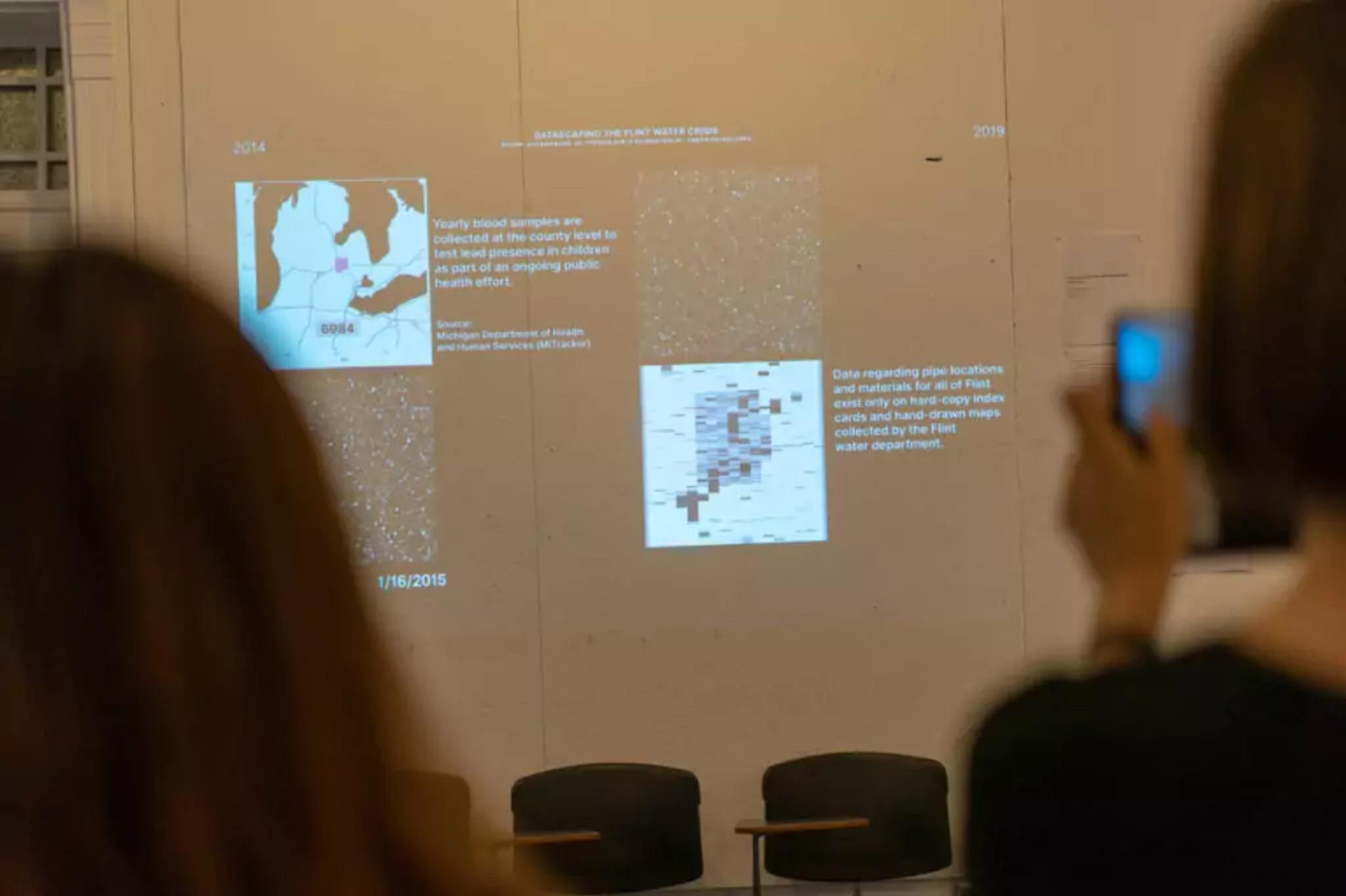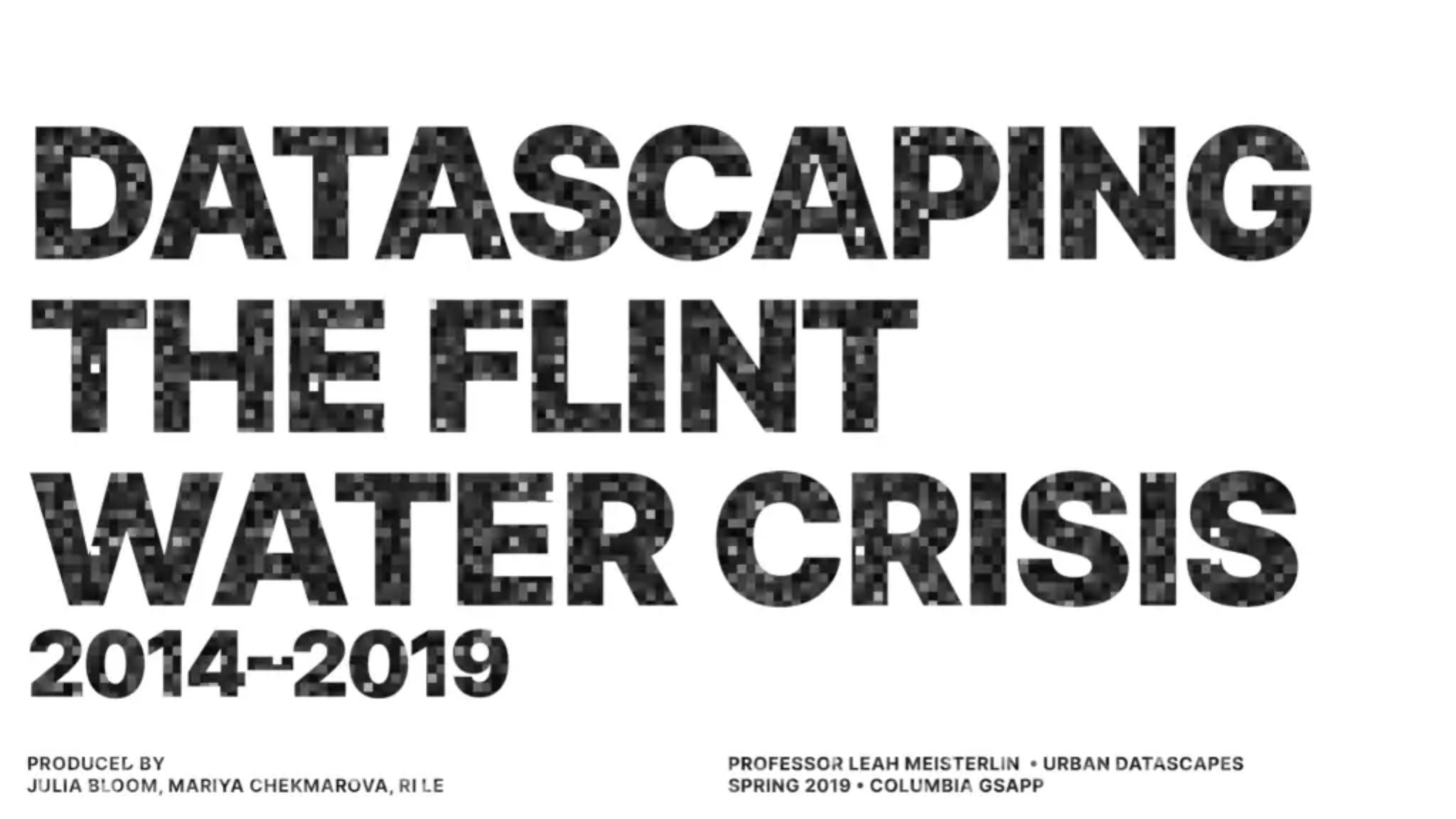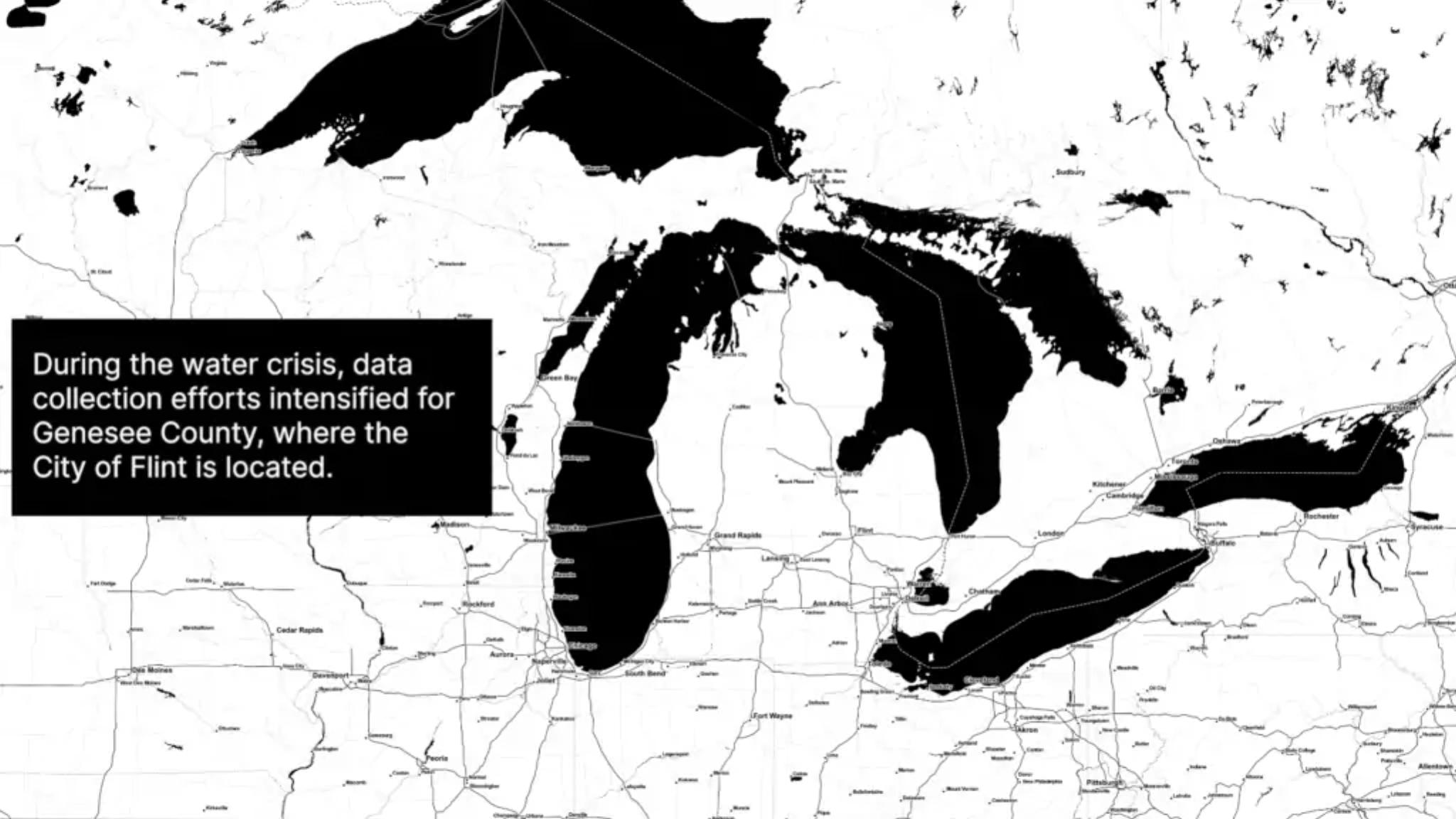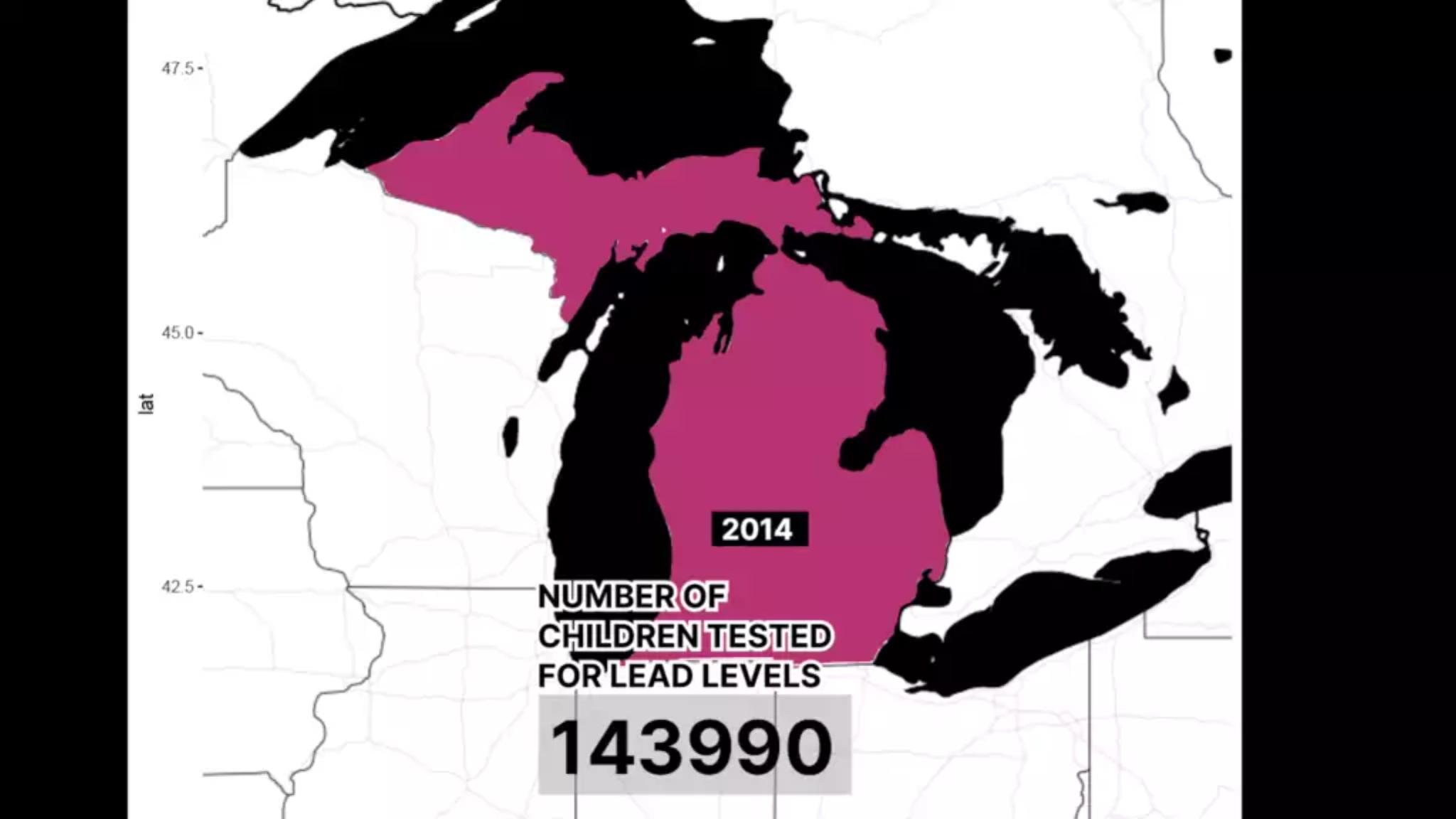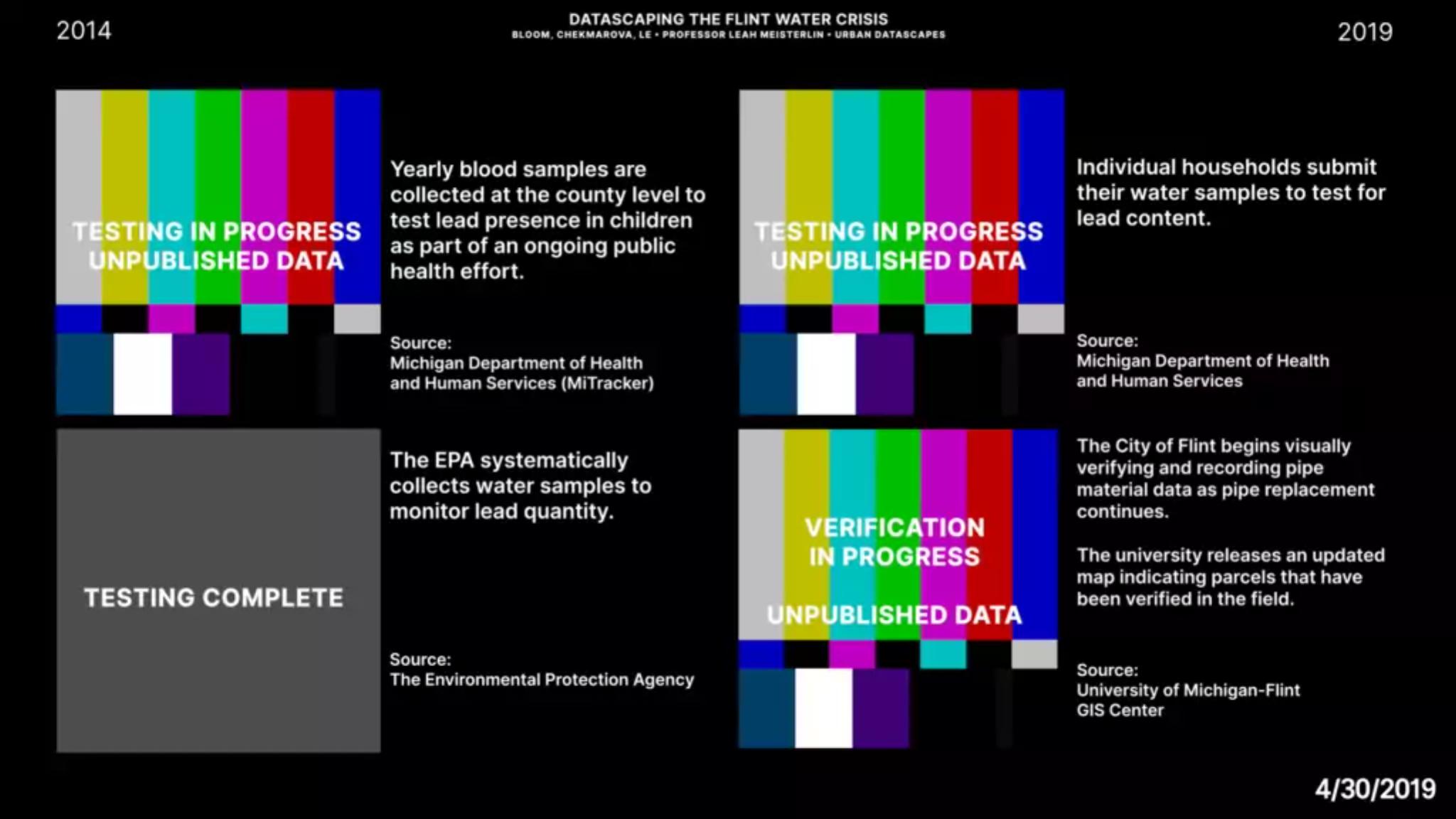
Team: Julia Bloom, Mariya Chekmarova, Ri Le
Professor Leah Meisterlin
Urban Datascapes, Spring 2019
Columbia University Graduate School of Architecture, Planning and Preservation (GSAPP)
“Re-projecting” disembodied data on blood and water, our project uses biometric data and cartography to give context and to illustrate the tragic crisis of bureaucratic mismanagement that became emblematic of racial inequality for Black urban residents and infrastructural disenfranchisement.
In April 2014, the city of Flint, Michigan changed its water supply from Lake Huron to the Flint River as a temporary change while awaiting future connection to the Karegnondi Water Authority. As a result of this change, untreated water from the river corroded the city’s lead and copper piping, delivering contaminated water to roughly 100,000 residents. While residents immediately raised concerns over the quality of the water, city leaders insisted the metal content was below EPA standards. By January of 2015, after a routine monitoring of the water quality, city officials sent a formal notification to residents that their water was in violation of the Safe Drinking Act. This meant that the level of contaminants in the water were unsafe, with readings far higher than accepted standards. Though there was still no formal acknowledgement of the crisis by state officials, various news reports highlighted the extent of the issue and documented the community’s response, which served as primary record in the wake of bureaucratic invisibility.
All four datasets appear along the timeline at different times, for different durations. Their appearance is synonymous with the responsive nature by which they were created. They exist simultaneously only when government officials formally acknowledged the water crisis in Flint. Their duration is related to the goals of the particular data collector, with volunteered samples continuing to be submitted to this day, but EPA samples ceasing to exist once compliance was achieved. Together, they form a crisis dataset that illustrate the various dynamics that created a tragic crisis of urban inequality out of what would otherwise become bureaucratic mismanagement.

